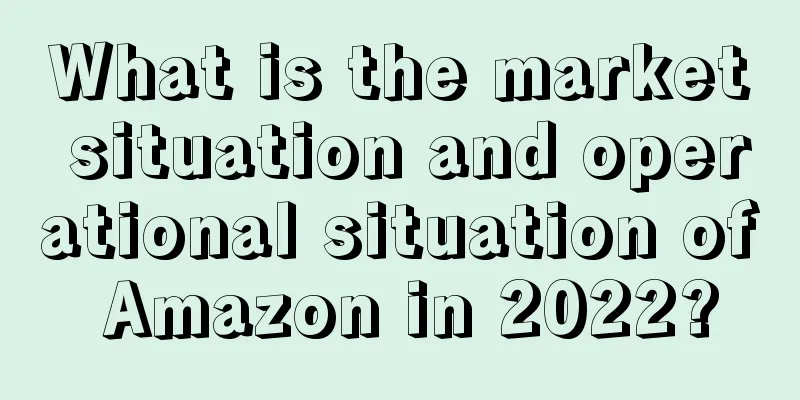Internal competition has been upgraded! Amazon’s “refund only” mode is launched!

|
Not long ago, Amazon held a closed-door meeting in Shenzhen, where it revealed a new project, the "Low-Price Store," which will be launched in the second half of the year. It is not difficult to see that Amazon’s most urgent task now is to retain users with low prices. But one thing is that the closed-door meeting only invites sellers who are direct suppliers and manufacturers , and the rights of low-price stores are not open to the public and only internal invitations are accepted. So, have you ever thought about why the first batch of test users chose sellers with manufacturers and suppliers? First of all, it’s because these sellers are able to keep the prices to the lowest! With the support of the on-site follow-selling operation, if the same product wants to be sold, it must be sold at a low price. Factory-type sellers can rely on low prices to crush the entire market, because low-price shopping malls have no brands, no idle storage capacity, no advertising and cannot carry out promotional activities. If they want to rank high under the search mechanism, they have to look at the price. The final result is that every product sold is lost, and all other sellers are driven away. Whoever can hold out the longest wins. Perhaps this is also a result that Amazon is happy to see. After all, in the current competitive environment, price power is the bargaining chip that this e-commerce big brother and a number of fully managed platforms must win. At the same time, many sellers focused on obvious advantages such as low-price strategy, full-hosting services and pricing power , but accidentally overlooked a hidden problem - the "refund only" policy.
Despite a flood of vocal feedback, Amazon’s refund-only version 2.0 is set to go live. Specifically, the low-price store project clearly states: No returns are allowed for refunds for items below $3, and only refunds are available for items above $3. Many sellers say that Amazon is using Temu’s tactics to defeat Temu, but in fact, as early as 2017, Amazon added the concept of refund without return to its after-sales policy, claiming that this was "strongly requested by sellers." At the beginning of 2021, Amazon officially launched a new return and exchange policy: full refunds are provided for goods worth no more than 20 pounds or 25 euros, and no return of the goods is required. Amazon's explanation: Refund only is a highly demanded intention feature for sellers. In many cases, it can help sellers save on return shipping and handling costs, reduce buyer return dissatisfaction rate (RDR), and improve your store rating. However, unlike the "refund only" policy of the domestic e-commerce market, Amazon's past "refund only" process requires negotiations between customers and sellers, and only refund services can be carried out when both parties agree to the operation. However, in the past two years, Amazon customer service has begun to proactively ask customers whether they would like a refund without returning the goods, and even consciously "trains" buyers to escape the order, taking the initiative to operate without notifying the seller! This move seems to be Amazon's ultimate pursuit of consumer experience and its attempt to create a service concept of "users are God". However, it actually poses a considerable challenge to the seller group. It can be said that it completely disregards the life and death of sellers for the sake of the buyer's market. On the one hand, "refund only" can help sellers reduce costs, including logistics and labor costs caused by returns and exchanges, and can also attract more buyers to place orders and effectively stimulate sales on the platform. On the other hand, "refund only" will cause sellers to lose products and have to pay logistics fees, and the loss of profits is obvious. Specifically for Amazon sellers, when an FBA order generates a return, the platform will deduct a 20% commission as a refund management fee. The seller may also have to bear the FBA fees, and even removal fees or disposal fees. At the same time, the "refund only" policy may benefit many "freeloaders" and "zero-dollar buyers" who are looking to take advantage of the situation. According to research by Signifyd, fraudulent returns account for about 8% to 10% of total returns in online retail.
The loophole of the "refund only" policy has become a hotbed for "wool-grabbing parties", causing immeasurable economic losses to the platform and sellers. Therefore, for sellers, the most reluctant thing is that these professional wool-grabbing buyers will target their own stores.
If you lose sellers, you lose a lot, but if you lose buyers, you lose everything ! For the platform, if you don’t sell, there are still people who sell; but if you don’t buy, then there is really one less person to buy. After all, in an era when buyers are scarce, the platform will definitely tend to help buyers. |
<<: FBA policy changes again? Defect rate over 50% will be banned for 30 days!
>>: Something happened again! Amazon began to force sellers to lower prices!
Recommend
What is SOJOS? SOJOS Review
SOJOS is a Wenzhou foreign trade enterprise specia...
How to create best-selling products for overseas retail e-commerce
As cross-border e-commerce has become increasingly...
Kaiyo, a second-hand home furnishing e-commerce company, received $36 million in financing! The development prospects are promising!
<span data-shimo-docs="[[20,"获悉,据外媒报道,近日二手...
The British pound is no longer stable! The European economy is in recession, and cross-border sellers are clearing out their inventory and "running away"...
It is learned that according to foreign media repo...
Many cross-border e-commerce giants have suspended their IPOs! Is the end of cross-border e-commerce a listing?
▶ Video account attention cross-border navigation ...
ThredUp's first quarter revenue reached $72.7 million! The number of active buyers increased to 1.7 million!
<span data-shimo-docs="[[20,"获悉,据外媒报道,近日美国...
What is NXcloud? NXcloud Review
NXcloud is a cloud communications company that spe...
What is Wangji? Wangji Review
Wangji Technology was founded in 2014. It is the f...
Official notice! Cross-border logistics costs may surge 164% next year
We just reported some time ago that the United St...
What is Kogan? Kogan Review
Kogan was founded in 2006 by Ruslan Kogan and is o...
What is Tommy John? Tommy John Review
Tommy John is an American clothing company that pr...
Christmas season online sales data released! Growth rate exceeds last year
In the past two days, overseas data agencies relea...
Lone hero or speculator? Sideline anxiety besieges Amazon operations!
▶ Video account attention cross-border navigation ...
Online item prices fell 1% in January! US inflation slowed further!
It is learned that Adobe recently released the lat...









